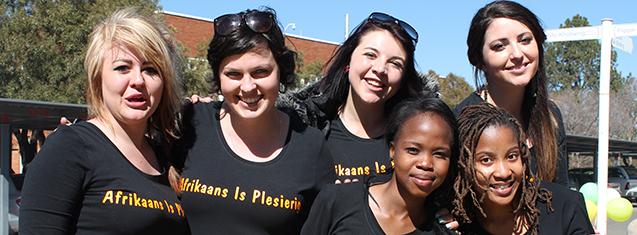Afrikaans Language Day invites greater university community to celebrate the language

On 14 August 2015, the Vuur en Vlam Committee hosted an event which provided the university community the opportunity to celebrate Afrikaans Language Day. The occasion celebrated the establishment of the language in South Africa. With the unexpected arrival of the Dutch in 1652, the language transition proved a struggle for the indigenous peoples domiciled on African soil.
The committee’s primary objective was to change existing cultural connotations associated with the Afrikaans language. The use of diversity can help undermine the African stereotype held about the Afrikaans language, and thus bring about a mindset shift. It is important to remember that not all Afrikaans speakers are white, and emphasis is rarely directed to the diversity of Afrikaans speakers.
Approaching the celebration, a sensitive discussion around the Afrikaans language was hosted, in which various panel members discussed the state and current outlook of the language. Prof André Keet, Director of the Institute for Reconciliation and Social Justice, who was part of the panel said, “No language gets to be misused to maintain the privilege of the past.” Director of the Free State Arts Festival, Ricardo Peach, shared the notion that “We must build on what we have, and not break it down,” while he describes himself as a “polluted language boer”. While there is a strongly-expressed hatred for the Afrikaans language, Peach maintained further that there is much work to be done in order to “Break down the link between the language and the Holocaust which took place in the homes of Afrikaans people.”
Lindiwe Kumalo, chairperson of the Vuur en Vlam Committee, said: “We are creating an awareness around campus that Afrikaans is not dead. Once you know the language, you can interact with other people, and there is no longer that language barrier.” Amongst other things, the event encouraged dialogue by creating fun and interactive activities which exposed visitors to the language.
The Vuur en Vlam Committee is committed to creating an awareness of, and vibrancy around, the Afrikaans language, and to engaging the broader university community.